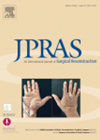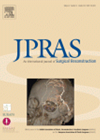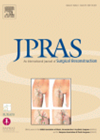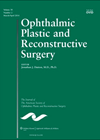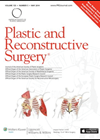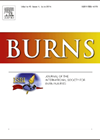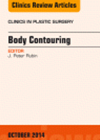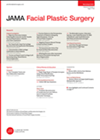
Journal Reviews
Modified temporalis muscle transfer for facial palsy
Use of the temporalis muscle to mitigate the deformities of facial palsy is an accepted technique, but getting the temporalis muscle into the correct position, with the correct tension, is difficult but essential if the operation is to be successful....
Multiple free flaps for head and neck cancer
Most patients with advanced head and neck cancers now undergo microvascular free flap reconstruction. This is mainly as flaps facilitate complete tumour and margin removal by providing reliable wound coverage and better restoration of form and function. However, despite this,...
Nasal deformity following CPAP injury
Nasal continuous positive airway pressure (nCPAP) is commonly used as a non-invasive alternative to endotracheal intubation and tracheotomy, to provide respiratory support to very low birth weight (VLBW) (<1500g) neonates. Nasal injury is a well recognised complication and figures quoted...
Surgical indications for infantile haemangiomas
Infantile haemangiomas (IHs) are embryonic tumours and represent the most common tumour of infancy, with an estimated incidence of 4-5%. There is a well described natural history, usually becoming apparent in the first few weeks of life and proliferating rapidly,...
Semi dynamic reconstruction of the lower lip
The main goal of reconstructive surgery for facial paralysis is the restoration of smiling and function of eye closure. The deformity of the lower lip in paralysis is ptosis of the corner of the mouth, eversion of the vermillion and...
Better outcomes from early repair of type B blow-out fractures
This paper examines whether early, rather than late, surgical repair results in better motility outcomes for a particular subgroup of orbital floor blowout fractures. The authors divide floor fractures into types A and B, depending on whether or not the...
Wide en bloc resection of lacrimal sac tumours
This is a retrospective review of the management and outcomes of 14 malignant tumours of the lacrimal sac. All patients were operated on jointly by an orbital surgeon and a head and neck surgeon. There is a detailed description of...
Crushed cartilage and fibrin sealant graft for radix augmentation
This paper shows a new technique for radix augmentation on Asian patients using crushed cartilage layers stacked on the nasal dorsum and stabilised with fibrin sealant. The study was made on 51 patients operated by the same surgeon in two...
Comparison of petrolatum gel with silver sulfadiazine dressings in small superficial burns
This was a randomised controlled trial set up in a single burns centre in Manila in the Philippines. Inclusion criteria were superficial burns not requiring skin grafting, and up to 10% total body surface area in young, fit adults between...
Hey look! Smaller arms and no scars...
The author of this chapter presents his experience of arm reduction leaving a scar in the axilla only; minimal incision brachioplasty (MIB). The technique is a modification of the Pollack technique to treat axillary hydradenitis. It is suitable for patients...
Body contouring surgery: Use common sense!
This informative article, which kicks off this excellent edition of Clinics in Plastic Surgery, provides a sensible and balanced review of when, why and what to do with the massive weight loss patient group. The recommended wisdom will be familiar...
An update on alopecia treatment options
In this paper the authors make a thorough review of the different medical and surgical options for the treatment of androgenic alopecia. Combined therapy with oral finasteride and topical minoxidil continue to be the mainstay for medical treatment. Follicular unit...

